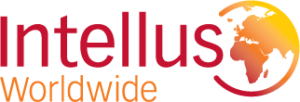Even on a linguist’s best day, it’s a challenge to measure the accuracy of a translation, outside of actually launching a survey (or other documents) and waiting to see how respondents react. Until you’ve put it to the test, the outcome can’t be predicted. Translation service experts agree that even a minor mistranslation can put an entire project at risk. However, there are some key steps you can take to ensure that your translation hits the mark.
Target Audience
Knowing the target audience for your translation is, obviously, the most significant aspect of any attempt to convert a document or other materials. But, it’s not just pinpointing the right language or culture; it’s determining which part of the target audience you’re truly trying to appeal to. For instance, are you delivering a survey that is tailored for consumers (B2C) or is it business-to-business (B2B) project? Is there a specific subsection of the audience that you’re after? Maybe those in a specific profession or an audience with high/low levels of education? It is imperative to know the group that you’re communicating with in order to develop the most natural translation. Without this information, you’re apt to miss subtle nuances that will help your translation resonate more effectively.Research Methodology
Identification of how the research is being conducted is essential for your translation. Common methods include:- Mall intercepts
- Focus groups
- In-depth interviews
- Telephone surveys
- Online/web surveys
- Bulletin Boards
Attention to Localization
To be accurate, your project should rarely include a word-for-word translation. Your translation must be culturally relevant and localized for the most accuracy. Localization efforts include translating for:- Abbreviations and acronyms
- Titles and proper nouns
- Alphabetization
- Numeric/time/date formats
- Currency/measurement conversions
- Brand names
- Pop culture/media
- Healthcare
- Religion
- Appropriate value shifts



